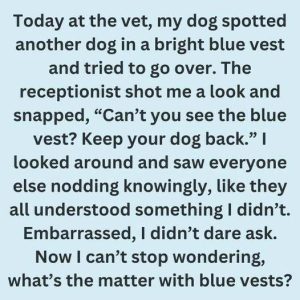The indictment: a sprawling smuggling network unmasked
In early 2025, a grand jury in Las Cruces, New Mexico returned an indictment charging 14 individuals for their role in what prosecutors described as a “sophisticated” alien‑smuggling operation. The 14 defendants are accused of conspiring to transport, harbor, and bring undocumented migrants into the United States — crimes that carry serious federal penalties. According to the charges, the network smuggled hundreds of migrants from Mexico into the U.S., passing them through stash houses in New Mexico and possibly South Texas, then moving them deeper into the interior.
Of the 14, eight individuals were arrested in a coordinated operation over February 20–21, 2025. The indictment’s scope — covering multiple states and border corridors — suggests the network functioned as a trans‑regional organization: not a small‑scale smuggling ring, but a structured entity providing systematic illegal transport, lodging, and logistical support for migrants. The DOJ’s statement says the network included people facilitating border crossings, drivers, stash‑house operators, and internal transport coordinators.
The hush‑house model described mirrors the modus operandi of other large human‑smuggling and trafficking enterprises: migrants are hidden in safe‑house style locations (“stash houses”) after crossing the border, then transported further inland — often under the cover of darkness or in vehicles designed to evade detection. In this case, the prosecution alleges not only systematic smuggling but also danger and exploitation — citing at least one migrant death during an attempt, and extreme methods of evasion including high-speed driving to avoid law‑enforcement checkpoints.
The human cost: danger, death, and exploitation
What makes this case especially grave isn’t just the scale — it’s the human risk. According to law‑enforcement officials, at least one migrant died of heat exposure after being abandoned in the desert following a smuggling attempt. That detail underscores a broader truth: smuggling networks often treat people as cargo — to be hidden, moved, and discarded — with scant regard for human life or dignity.
Federal prosecutors and Homeland Security investigators described these smuggling operations as not just legal violations but life‑threatening enterprises. Migrants — including possibly unaccompanied minors — were moved across dangerous terrain, housed in safe‑houses under precarious conditions, and instructed to evade law enforcement. The organized nature of the operations suggests the network was aware of these risks, and yet allegedly continued, prioritizing profit and evasion over human safety.
Officials framed the case as also a matter of public safety and national security. The leader of the investigative task force noted that such smuggling rings threaten border security, exploit vulnerable migrants, and undermine the integrity of lawful immigration and asylum systems. The indictment is thus as much about deterring dangerous transnational crime as it is about enforcing immigration law.
Legal response: charges, potential penalties, and law‑enforcement strategy
The 14 indicted individuals face serious charges under federal statutes — primarily conspiracy to transport, harbor, and bring undocumented immigrants into the United States for profit. These charges carry maximum sentences of up to 10 years per count, though actual sentences will depend on judicial discretion, criminal history, and other factors.
This indictment is part of a broader enforcement strategy led by the Joint Task Force Alpha (JTFA), an interagency effort created in 2021 to dismantle major human‑smuggling networks operating between Latin America, Mexico, and the United States. JTFA has already achieved hundreds of domestic and international arrests and taken down multiple large-scale smuggling and trafficking organizations, sometimes in coordination with extraditions, money‑laundering indictments, and asset forfeiture.
Sentencing in prior related cases provides a precedent: in a January 2025 case in the Southern District of Texas, two lead defendants were sentenced to 121 and 135 months in prison, respectively, plus ordered to pay millions of dollars in money judgments and forfeit properties purchased with illicit proceeds. These precedents suggest that the defendants in the Las Cruces indictment could face severe penalties — not only imprisonment but also forfeiture of profits and assets derived from the smuggling.
Prosecutors also intend to seize any illicit proceeds linked to the smuggling operation and to dismantle the financial infrastructure behind it. The DOJ statement noted that money-laundering charges often accompany human‑smuggling indictments — reflecting how many of these networks operate as profit-driven enterprises rather than ad-hoc migration facilitators.
Patterns and broader context: smuggling as organized transnational crime
This case is not an isolated event, but part of a broader wave of crackdowns on transnational human‑smuggling organizations. Recent DOJ and Department of Treasury actions show a sustained effort to disrupt networks that operate across borders, move large numbers of migrants, and profit from illicit activity. For example, in late 2025, the Treasury Department sanctioned a Mexico-based smuggling network (the Bhardwaj Human Smuggling Organization), jailing its leaders and freezing its financial assets.
Organizations like the one indicted now often mirror transnational criminal enterprises in structure: they use stash houses, clandestine transport routes, networks of drivers, money‑laundering channels, and sometimes violent or coercive enforcement to maintain control. The 2025 indictment reflects how law enforcement strategy has evolved: targeting not just border crossings, but the entire chain — from foreign planning and recruitment, to transit, lodging, financial flows, and domestic transport.
The expansion into domestic routes also demonstrates how smuggling operations adapt in response to border enforcement. Rather than relying solely on clandestine border crossings, networks increasingly move migrants through internal stash-houses and overland transport routes across states, making it harder to detect and intercept.
Uncertainties and open questions
Despite the broad outlines, some key details remain unclear. Public reporting does not yet reveal the full identities of all 14 indicted individuals — in at least two cases, names are withheld from the indictment. It is also uncertain how many remain at large, versus in custody, or whether some defendants will evade capture. While eight arrests were confirmed, the fate of the others is still pending.
Because indictments are only charges, the defendants are legally presumed innocent until proven guilty. As the case proceeds, key issues will include how many migrants were involved, whether minors were among them, the duration of smuggling activity, and whether there were other deaths or human-rights abuses associated with the network. The public record to date only confirms “hundreds” of migrants and “at least one death,” which may understate the full human toll.
There is also a broader systemic question: to what extent do economic demand, migration pressures, and cartel-related networks facilitate smuggling — and how effective will enforcement alone be in curbing such flows? Given that other organizations continue to be indicted and sanctioned, the pattern suggests that dismantling one network often leads to the emergence of others, unless demand and root causes are addressed.
Why this case matters — for migrants, law enforcement, and policy
This indictment sends a strong message: the U.S. government, via DOJ and DHS, is intensifying efforts to prosecute not only border-crossers but the organized criminal networks behind migrant smuggling. For migrants, it underscores the grave risks involved — involvement with smugglers can lead not just to deportation, but life-threatening conditions, exploitation, or abandonment. For enforcement agencies, it demonstrates that they can trace and dismantle long-running smuggling operations, even those that operate across states and international borders.
The action also holds potential deterrent value. By combining criminal prosecution, prison sentences, money judgments, asset forfeitures, and public naming of networks, authorities aim to increase the costs and risks for smuggling organizations. If done systematically, this could hinder the profitability that drives much of the human‑smuggling industry.
Finally, the case contributes to broader policy debates around immigration, border security, and migration reform. It highlights the need for comprehensive approaches: enforcement alone may not suffice — addressing root causes of migration, creating legal pathways, and protecting vulnerable migrants may be equally important to reduce demand for smuggling. The humanitarian dimension — the deaths, the abandonment, the dangerous transit conditions — points to the human consequences behind the headlines.





